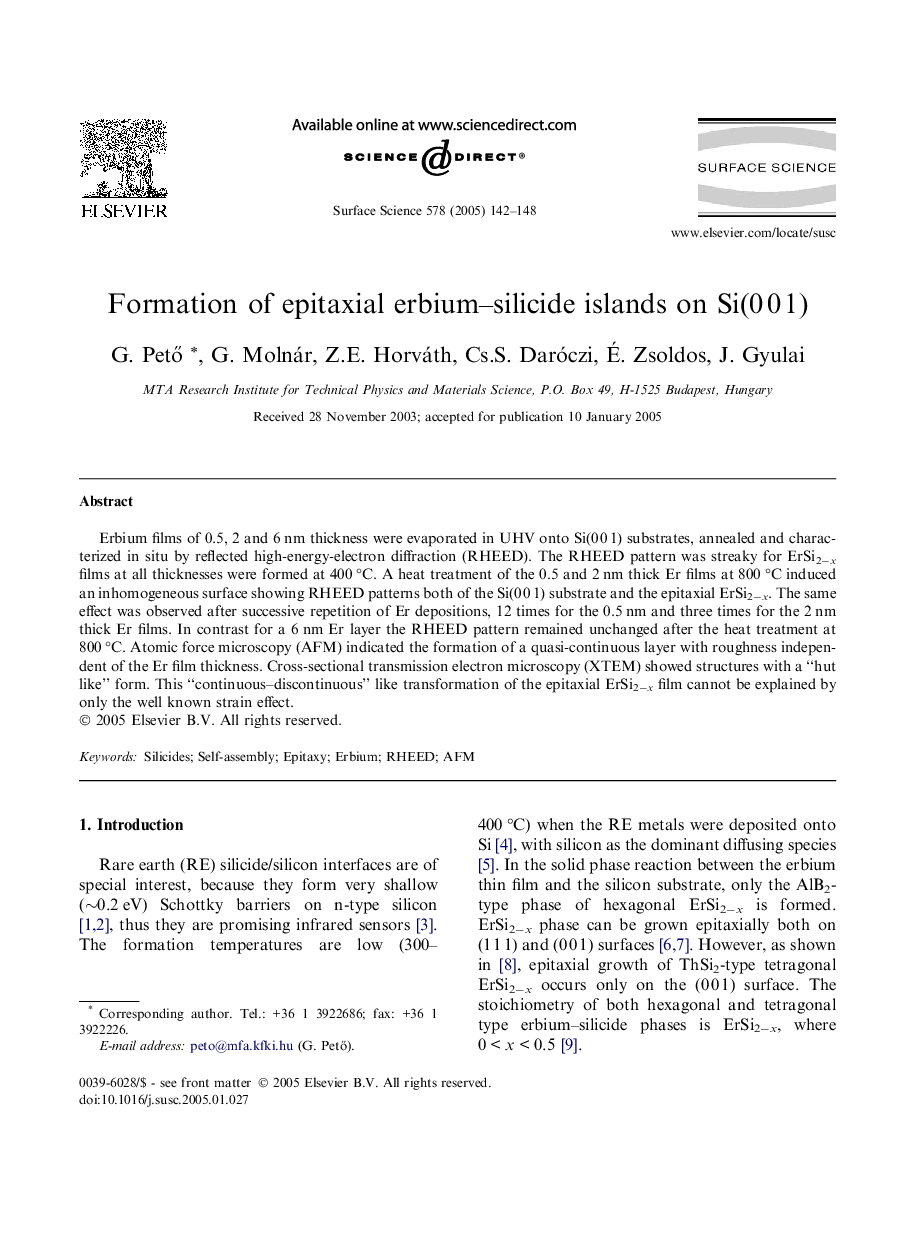| Article ID | Journal | Published Year | Pages | File Type |
|---|---|---|---|---|
| 9595700 | Surface Science | 2005 | 7 Pages |
Abstract
Erbium films of 0.5, 2 and 6 nm thickness were evaporated in UHV onto Si(0 0 1) substrates, annealed and characterized in situ by reflected high-energy-electron diffraction (RHEED). The RHEED pattern was streaky for ErSi2âx films at all thicknesses were formed at 400 °C. A heat treatment of the 0.5 and 2 nm thick Er films at 800 °C induced an inhomogeneous surface showing RHEED patterns both of the Si(0 0 1) substrate and the epitaxial ErSi2âx. The same effect was observed after successive repetition of Er depositions, 12 times for the 0.5 nm and three times for the 2 nm thick Er films. In contrast for a 6 nm Er layer the RHEED pattern remained unchanged after the heat treatment at 800 °C. Atomic force microscopy (AFM) indicated the formation of a quasi-continuous layer with roughness independent of the Er film thickness. Cross-sectional transmission electron microscopy (XTEM) showed structures with a “hut like” form. This “continuous-discontinuous” like transformation of the epitaxial ErSi2âx film cannot be explained by only the well known strain effect.
Related Topics
Physical Sciences and Engineering
Chemistry
Physical and Theoretical Chemistry
Authors
G. PetÅ, G. Molnár, Z.E. Horváth, Cs.S. Daróczi, Ã. Zsoldos, J. Gyulai,
